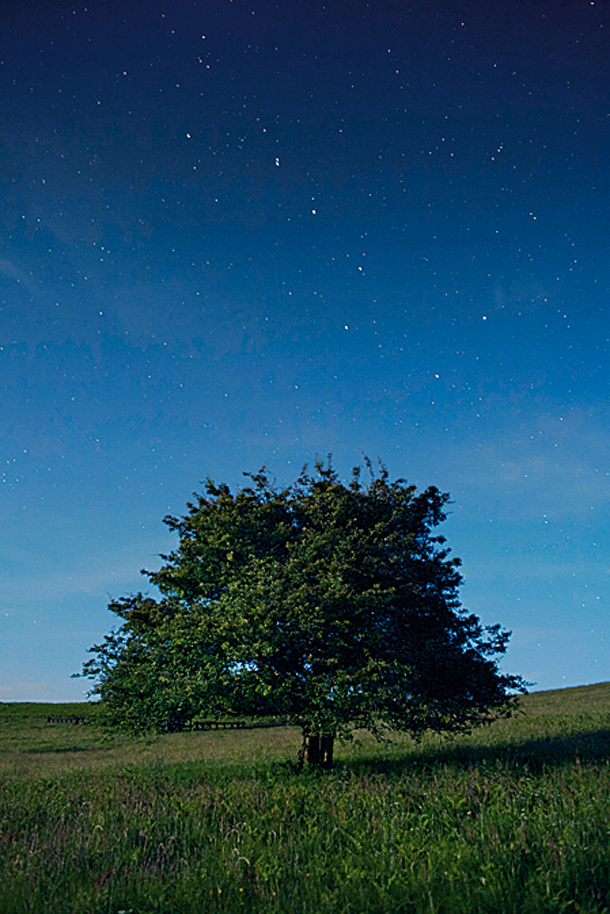Night photography settings your camera wants you to use
Nothing spoils your night photos like soft subjects

Nothing spoils your night photos like soft subjects and odd colour casts. Below and on the following pages we'll introduce some of the key night photography settings you should use in order to get pictures with real impact. We'll not only show you how to set up your camera for night photography, but offer night photography tips for controlling your colours, planning yours shoots and more.

Stepping out into the night and shooting the darkening sky can be one of the most exhilarating ways of expanding your photographic repertoire.
You can reveal a whole new world by shooting night photography, and end up with some much more satisfying images than the usual rather predictable stuff taken at sunrise or sunset.
The really good news is that it's not all about high-end camera kit. Modern DSLRs are highly capable, even at the beginner end of the market. Nor does your set-up have to include an array of exotic prime lenses, since any lens and digital camera can have you reaching for the starry heavens far more easily than before.
Night photography isn't all about shooting into a black viewfinder and guessing at compositions. For a simpler start, use the full moon to illuminate the landscape.
[caption id="attachment_542224" align="aligncenter" width="610" caption="Use moonlight to illuminate your scene"]

[/caption]
Get daily insight, inspiration and deals in your inbox
Sign up for breaking news, reviews, opinion, top tech deals, and more.
Moonlight is a neutral, white light that almost looks like a massive flashgun has lit up the land. Start by picking a favourite and well-known location that's within easy reach of the car.
Put the camera on a tripod, choose the manual mode to give you more control over your night photography settings, and then select a wide aperture (f/4, for instance).
You'll also want to include a high ISO value (such as ISO 800) and a shutter speed of about 30secs among your night photography settings (find out how to reduce noise at high ISO settings). Fire off the shutter using a cable release and marvel at just how much unseen detail your camera has recorded.
[caption id="attachment_542222" align="aligncenter" width="610" caption="Use a high ISO to accentuate a starry sky"]

[/caption]
If you're looking for a truly cosmic photo, capture the dark night sky instead. The light levels will be a lot lower than moonlight, but you can compensate for this by using a higher ISO setting.
Choose ISO 3200. This will record thousands of stars, but don't expect the camera to pick up any details in the landscape, such as a moonlit hilltop.
Night photography is all about letting go of image conventions. The light is so greatly reduced that the pictures will consist of photographic taboos, such as featureless shadows, but don't let this inhibit you.
When you begin processing your night photos on a computer, don't be afraid of using noise-reduction software. Most raw converters, such as Adobe Camera Raw, do an admirable job of bringing down noise levels. The Luminance slider provides the best control of noise reduction without decreasing detail.
Try applying the noise reduction in two stages: once in raw and then again using Photoshop CS's Noise Reduction tool, which enables you to tackle the issue in separate colour channels using the advanced options. You'll often find that one colour channel in particular will contain most of the noise.
If your noise-reduction efforts in Photoshop prove to be unsuccessful, try taking a 'dark frame' during your next shoot and subtracting it from the subsequent pictures.
Open your dark-frame image and the night photo you want to process in Photoshop. Copy and paste the dark frame into a new layer on top of the image and select the Difference blending mode (learn more about blending modes and the 10 best blends for photographers).
Your first shoots may not be successful, but once you gain some knowledge of how and where to shoot, night photography becomes an extremely enriching experience. With good camera technique and careful processing skills, your images can be breathtaking.
PAGE 1: Options for night photography settings
PAGE 2: 3 key night photography settings every photographer should use
PAGE 3: Control your colours
PAGE 4: Final tips for your night photography shoot
READ MORE
12 common errors of night photography (and how to solve them)
Night Photography: set up your camera to shoot anything
Light Trails: what you need to know to master this night photography favourite